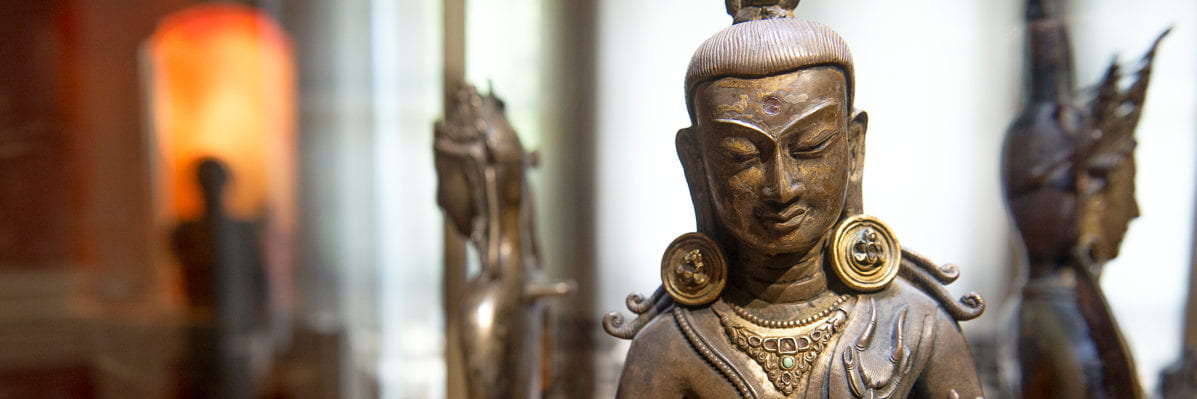Collections Highlights
The museum has a fine collection of Japanese Paintings and Drawings. Drawn from the Harari Collection, it includes 225 rare works by Hiroshige, Hokusai, Utamaro, and other artists of the Edo (1603-1868) and Meiji (1868-1912) periods. The museum purchased an important collection of over 200 Japanese folk paintings called Otsu-e, which, when added to the existing Otsu-e in the collection, make it one of the largest collections outside Japan.
The museum collection holds more than 800 examples of Japanese, Chinese and “Orientalist” Graphic Art, including Japanese Edo-period woodblock prints and modern Sosaku and Shin Hanga prints. Of particular note in the print collection are a complete set of 166 woodblock prints created in Japan by 20th century French artist Paul Jacoulet (published in a 1989 museum catalog) and a full set of 80 Marian Korn prints. The museum also holds 75 posters by Japan’s foremost graphic designer, Tanaka Ikko. In 1998, the print collection was augmented by major gifts of over 150 Edo and Meiji period prints (doubling the museum’s holdings), and forty late 20th-century Japanese prints.
The museum’s large collection of East Asian ceramics exceeds 1,000 pieces, including over 600 Chinese ceramics from the Neolithic era through the Qing dynasty. The Han, Tang, Song and Ming dynasties are strongly represented, as are Imperial porcelains from the Qing dynasty. Also significant are 350 Southeast Asian ceramics from the Margot and Hans Ries Collection (published in a 1982 catalog); approximately 40 Vietnamese ceramics from the collection of the late Ambassador and Mrs. Jack Lydman; Japanese tea ceremony wares, folk ceramics, and satsuma and kutani wares.
The museum’s Jade Collection includes 150 Chinese works from the Neolithic period through the Qing dynasty, including a pair of jade earrings of extraordinary quality, believed to have been owned by China’s last Dowager Empress, Ci Xi. The central holdings of the Costumes and Textiles collection are 2,000 Chinese textiles from the Ming (1368-1644) and Qing (1644-1911) dynasties, and 500 textiles, including silk kimono, from Japan’s Edo and Meiji periods, roughly 100 Southeast Asian textiles, and forty examples of Indian textiles. Among the most prized holdings are 50 outstanding Imperial Chinese silk robes and an important Chinese embroidered handscroll signed and dated 1627.

Over 200 outstanding examples of Buddhist and Hindu bronze, wood, ivory, and stone sculptures, paintings, and ritual objects from China, Korea, Japan, India, Tibet, Nepal, Southeast and Central Asia span 2,000 years of artistic production. The museum holds a notable collection of South Indian miniature Chola bronze figures from the 10th century onwards and approximately 30 Indian miniature paintings. The museum is the only California museum where scholars and the Vietnamese community can view examples of 18th-19th century Vietnamese Buddhist sculpture.
Artworks On View
Please note that not all collection items are on display in the galleries due to space restriction and sensitivity of certain works on paper, silk, lacquer and other materials.
Please refer to “Artworks on View” under “Search the Collection” for objects currently on view in the galleries.